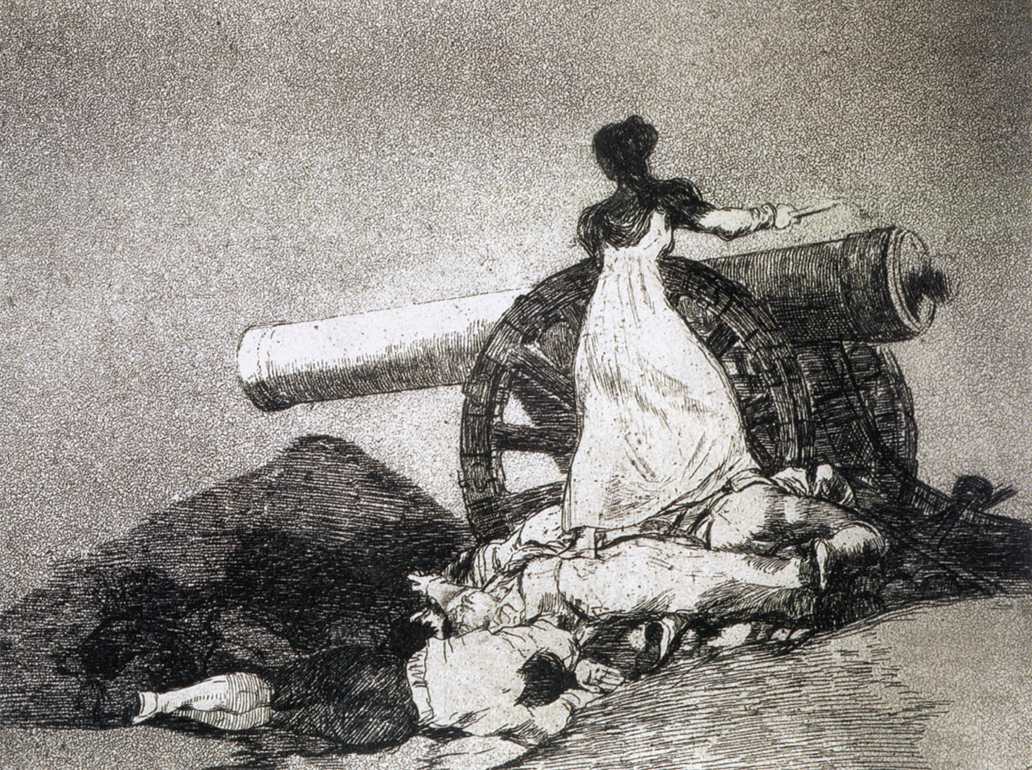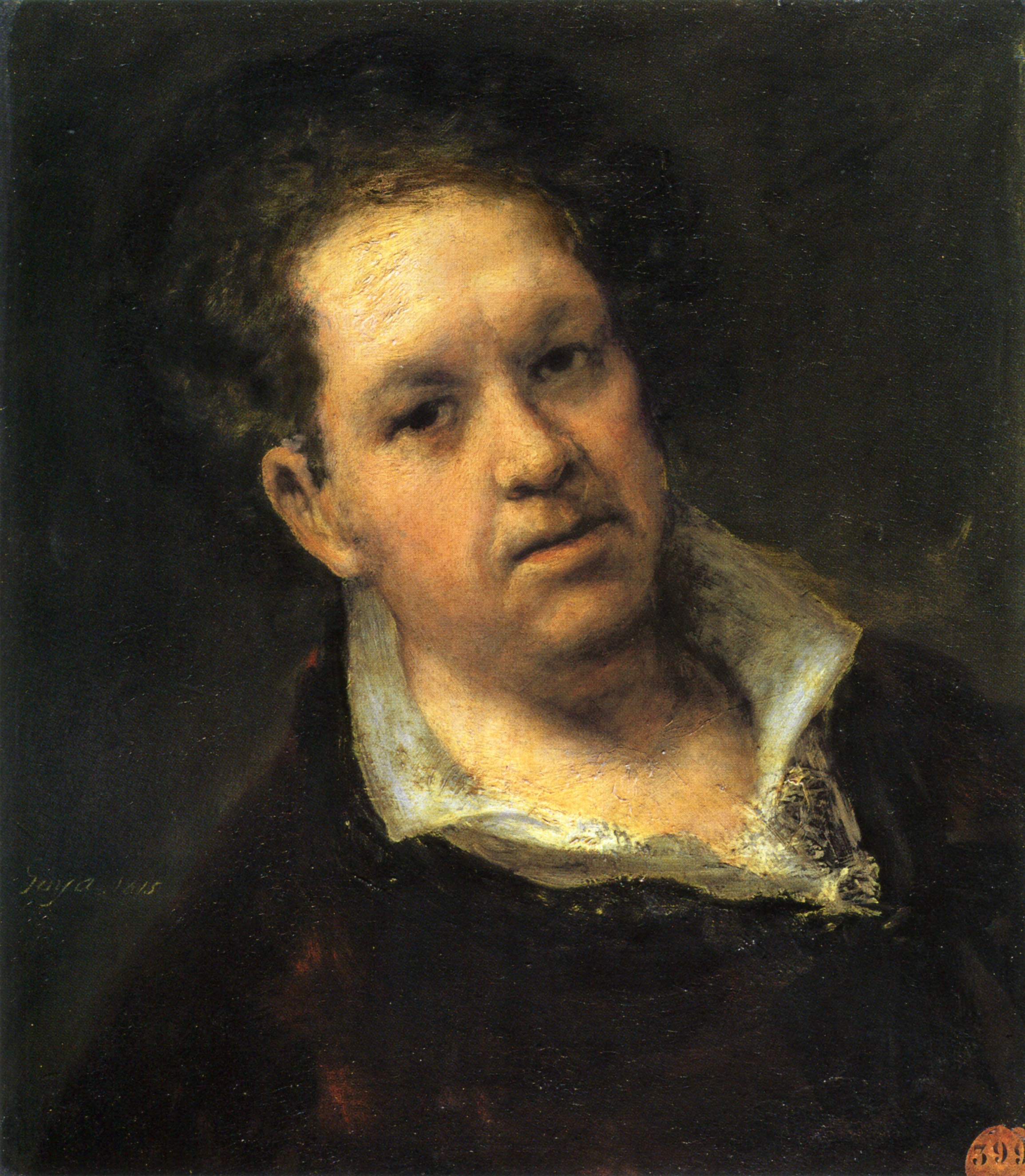



What courage!
etching and lavis • -
The Disasters of War is the series of etchings created between 1810 and 1820 that comprise images of war and famine as well as allegorical scenes that refer to the period after the war, when the conservative King Ferdinand VII was reinstated to the Spanish throne. The scenes were inspired by current events the artist witnessed or read about in newspaper accounts; Goya etched them onto copper plates that were printed thirty-five years after his death. The artist himself described them as“fatal consequences of the bloody war in Spain with Bonaparte, and other emphatic caprices.”
Plate 7, which Goya titled Que Valor! (What courage!), portrays the courageous twenty-two-year-old Agustina of Aragon, sometimes referred to as the Spanish Joan of Arc. In the summer of 1808, when Napoleon’s armies were bayonetting their way through the city of Zaragosa en route to Portugal, Agustina arrived on the battlefield with a basket of apples to refresh the Spanish guerillas trying to protect their city. When she reached the ramparts she found only fallen soldiers. Climbing over them, she grabbed a match from one to light the fuse of a cannon, firing it single-handedly at oncoming French troops. She held her position, manning the cannon, until her bravery inspired fleeing Spanish troops to return to the battle. On that day the French gave up the fight, but they returned just a few weeks later to take the city house by house.
 Francisco Goya
Francisco Goya